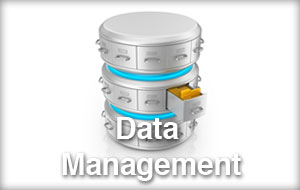The industry has seen plenty of marchitectures from Cisco and its peers over the years. Its newest one, Digital Network Architecture (DNA), feels different, especially after I spent a week at Cisco Live 2016. DNA is different because underneath all the slideware and demos is an apparent commitment to changing the way enterprises do networking. In other words, Cisco wants network engineers to rely less on their skills with its command line interface (CLI).
Cisco DNA is Marchitecture, But Also a Shift Away From CLI
By Shamus McGillicuddy on Jan 26, 2017 2:02:35 PM
Preparing Network Management for SDN and NFV
By Shamus McGillicuddy on Jan 26, 2017 2:02:34 PM
[Editor’s note: This blog is sponsored by Infosim®, but the content is entirely my own]
Network Managers Should be Monitoring Servers
By Shamus McGillicuddy on Jan 26, 2017 2:02:33 PM
Editor’s Note: This article was originally published by HelpSystems on February 2, 2016.
Early Adopters Define SDN
By Shamus McGillicuddy on Jan 26, 2017 2:02:33 PM
Greg Ferro recently blogged about how attempts to define software-defined networking (SDN) are a waste of time. He wrote:
The Benefits of Leveraging MSPs for Performance and Security Monitoring
By Shamus McGillicuddy on Jan 26, 2017 2:02:32 PM
[Author’s Note: This post is sponsored by Edgeworx. The content is entirely mine.]
The Truth Behind the Scope of the Endpoint Problem in the Enterprise
By David Monahan on Jan 12, 2017 6:41:06 PM
The Evolution of the “Endpoint”
Over the past few years, the perception of what an “endpoint” is, and therefore the definition, has changed. The original perception was a user workstation independent of operating system. With the expansion of functionality, data persistence, Internet connectivity, and ultimately the threats against them, that definition no longer applies. Laptops became included, then smartphones, servers, tablets, internal file shares, and dedicated or special function devices such as point of sale terminals and processors.
Analytical Resolutions for Technologists and Tech Teams in 2017
By John Myers on Jan 5, 2017 9:03:35 AM
Ahhh, the annual resolutions list! A time-honored tradition when we all look at the new year as an opportunity for a fresh start.
PODCAST: Discussing Big Data, Integration and Security
By John Myers on Jan 5, 2017 9:03:34 AM
Dos and Don’ts for the Data Scientist
By John Myers on Jan 5, 2017 9:03:34 AM
Review of Statistics Done Wrong by Alex Reinhart
Since the advent of the big data era, organizations have been crying out for data scientists. Initially it was finding the true data scientist. But as these resources were considered scarce, it was a search for people who could hand-code analytical models in a Hadoop environment. As statistical tools such as R, Alteryx, and RapidMiner augmented Hadoop environments, we started to include traditional tools such as SAS and SPSS. These data scientists, or data scientists in training, were asked to take large amounts of data and divine the nuggets that would create a “cross-sell/up-sell” recommendation engine that would launch the next Netflix or link two disparate data sets that explain how markets interact and find the next groundbreaking investment opportunity.
PODCAST: Cloud Data Warehousing
By John Myers on Jan 5, 2017 9:03:34 AM





